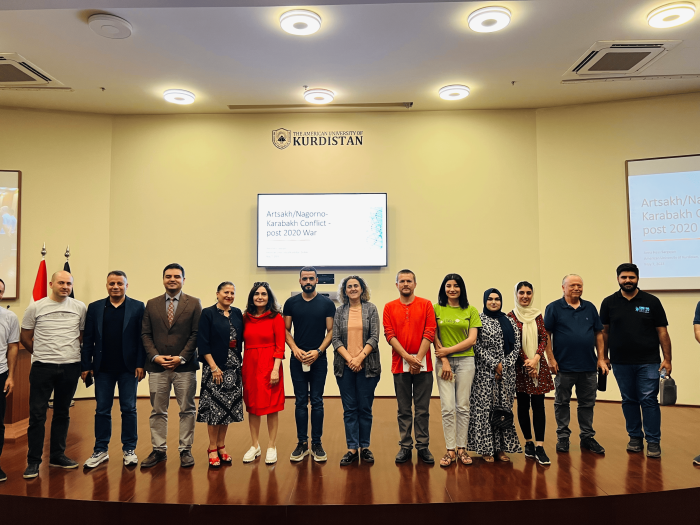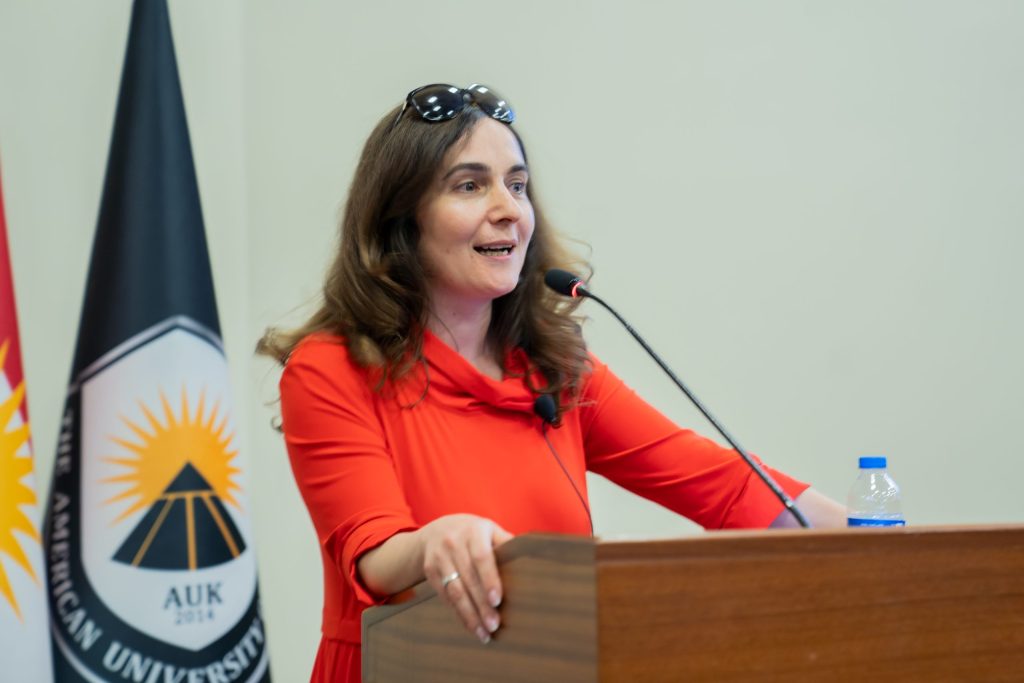Center for Peace and Human Security’s Second Seminar, with Anna Hess Sargsyan
On May 7, the Center for Peace and Human Security (CPHS) at the American University of Kurdistan (AUK) held its second seminar of the semester. This event featured Anna Hess Sargasyan, a Swiss-Armenian expert on conflict resolution who regularly works with the Austrian Center for Peace. Ms. Hess Sargasyan’s talk, “The Ongoing Conflict between Armenia and Azerbaijan over Artsakh [Nagorno-Karabakh]: Prospects for Peace and Security,” was relatively informal in format, with questions addressed throughout rather than saved for the end.
Dr. Jiyar Aghapouri, CPHS Director, introduced the event and highlighted larger themes in AUK’s International Studies courses that connect to the seminar’s topic: how identity is related to geography and how politics can impact names. Dr. Aghapouri explained to the largely Kurdish audience why the area under discussion was relevant to them, being the location of “Red Kurdistan,” an autonomous Kurdish polity in early Soviet times.
Ms. Hess Sargasyan early on stated her aim to be a dispassionate “political scientist” in her talk. She acknowledged that her Armenian origins could predispose her to holding more of the Armenian perspective on this conflict, but she was quite balanced in outlining the Azerbaijani position. She provided background information, including the outbreak of hostilities between the newly independent Armenia and Azerbaijan upon the USSR’s dissolution; the roughly 25 years in which Armenia effectively occupied the disputed territory; and the 2020 war which Azerbaijan “won” but resulted in a Russian peacekeeping presence, not a lasting settlement.

Ms. Hess Sargasyan actively engaged the audience. For instance, she asked the attendees: “What is peace?” Answers included “freedom,” “safety,” “interconnected society,” and “the absence of active conflict.” The discussion shifted to possible resolutions to this imbroglio post-2020. Her presentation included a slide illustrating the complex international relations surrounding Armenia and Azerbaijan. The slide, reproduced here, used green lines for alliances, red lines for opposition, and dotted lines for neutrality (or uncertainty). Furthermore, it used different sizes for the competing powers, representing their relative investments in this territorial dispute. The audience’s questions and comments, on this slide and others, were numerous and insightful. While not settling on a workable solution to this ethno-territorial crisis, the students’ debate did inspire confidence in critical thinking skills that should lead to compelling research projects and senior theses in the near future.



